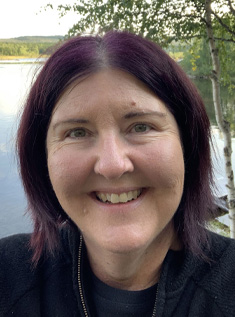 The Australian Journal of Emergency Management is pleased to continue the Viewpoints series in this edition. Established in April 2022, Viewpoints critically explores cross-cutting and emerging issues by canvassing a range of informed perspectives from experts and practitioners in response to a ‘seed’ article that poses a timely argument or issue for the emergency management sector.
The Australian Journal of Emergency Management is pleased to continue the Viewpoints series in this edition. Established in April 2022, Viewpoints critically explores cross-cutting and emerging issues by canvassing a range of informed perspectives from experts and practitioners in response to a ‘seed’ article that poses a timely argument or issue for the emergency management sector.
This edition, the seed article is authored by Dr Lisa Ewenson from the University of New South Wales’ HowWeSurvive initiative. The article asks why social work is under-recognised in disaster management, and what can be done about it. Dr Ewenson argues that ‘expanding the recognition of social work expertise to mitigation, preparation, response and recovery more broadly could help challenge and address the underlying systems, and significant resource imbalances, which create the deeply uneven landscapes that make disasters so difficult for so many’.
Five responses explore the issue, touching on the correlation between natural hazards, homelessness and trauma, and the challenges of high staff-turnover and the temporary nature of many recovery roles. Respondents shared the view that adopting the principles of social work would enable capacity for communities to be active participants in disaster prevention, preparedness and recovery. It is an important and timely conversation that puts people at the centre of emergency management.
This theme continues into the research section of this edition, with a paper on embedding humanity for sustainable community disaster resilience. The paper, authored by Associate Professor Jenny Hou, Professor Greg Hearn, Professor Kim Johnston, Associate Professor Michelle Villeneuve, Dr Aparna Hebbani, and Dr Michael Carroll, focusses on a humanistic communication perspective. It argues that a humanistic approach to disaster resilience will respond to context-specific needs and concerns of diverse groups, rather than leaning on generalised assumptions.
This paper is offered alongside a varied offering of research papers, spanning lifeguard service evaluation, the role of search and rescue NGOs in Aotearoa New Zealand, the professionalisation of bushfire planning and design practitioners, analysing disaster risk reduction organisational fields, and stratospheric balloons for early warnings and incident monitoring.
The cover of this edition features the winning photo of the 2024 Resilient Australia National Photography Award. It was an honour to attend the National Ceremony in Canberra last year to present Tina Marshall and the team at Carinbundi the award for their image Carinbundi Clients Complete Emergency and Disaster Management Training. You can learn more about the story behind the winning photo and all the projects recognised across 10 award categories from page 79. My sincere congratulations to all winners and finalists of this year’s Resilient Australia Awards.
We begin 2025 with another strong edition of the journal. We continue to plan and source sector knowledge content, and encourage you to be part of AJEM through submitting to the journal. On behalf of myself and the AJEM Editorial Committee, thank you for your continued readership and participation.


